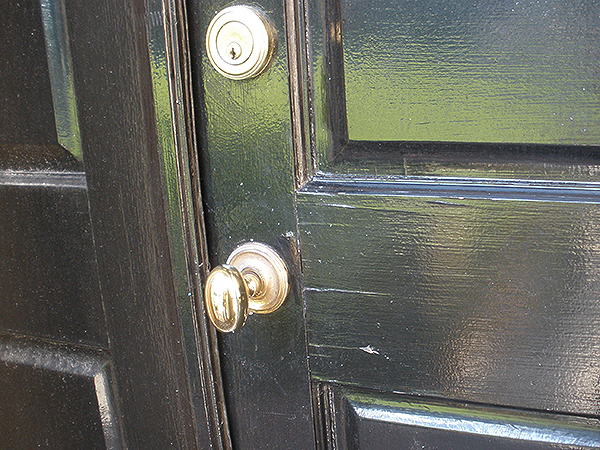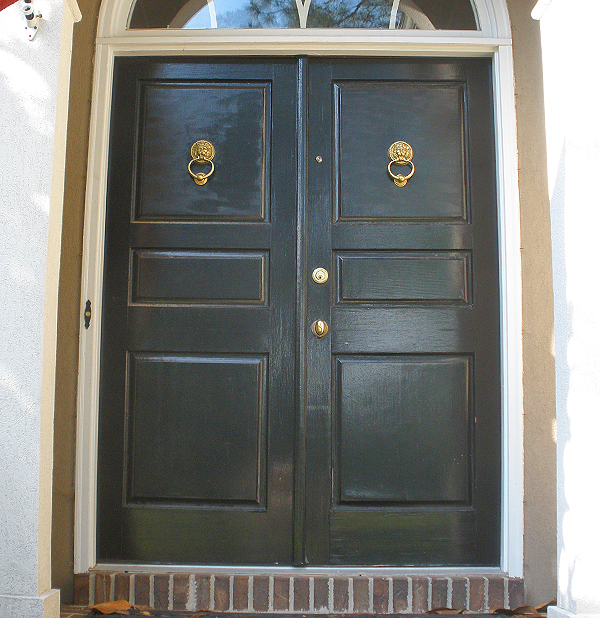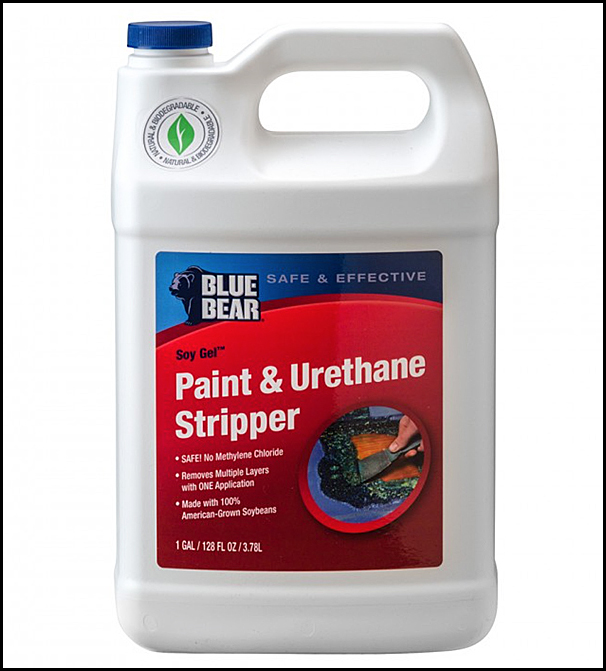
Our home faces west, and the front door catches at least five hours of southern sun daily. The finish has begun to show some crazing, and also to suggest that it has had many coats of paint over the years (house is about 20 years old). I would like to refinish these doors but wonder what the proper procedure should be. Should they be stripped (using what?)? Sanded down to bare wood, filled (using what?) and then repainted? What would be the best type of paint? Also, I am also wondering if they should just be replaced? The doors are too large and too heavy for me to take down, refinish in a day, re-hang and manage on my own. – Roland Weisser
Tim Inman: I am going to suggest that this is a project for a professional. Exterior entry doors are tough customers. You don’t have the equipment and experience that a pro will have. But the real issue is cost. It will probably be cheaper to just replace those doors. Restoration work is usually best justified when the money is being spent to preserve or maintain something which is either special or irreplaceable. In the case of a 20-year-old door (1998?), you can almost certainly put in a nearly identical new one for much less than the cost of restoration and refinishing.
Chris Marshall: Those are a nice set of entry doors, and it would be a shame to replace them if you don’t absolutely have to. If they seem structurally sound and offer decent weather-sealing, I’d do what you are planning to do and repaint them. While I’m not a professional painter, here’s what I’d do. I’d leave the doors hanging in their jambs and try to strip off the old paint with them standing. That way, you can save your back over taking the doors down, and you won’t have to tackle the whole job in one day. Go with a gel-based paint stripper. You can apply it to vertical surfaces, and its consistency will help hold it in place. You could even cover the doors with sheet plastic, once the stripper is applied, to help the chemicals accelerate the stripping process. Of course, cover the floor and steps with sheet plastic, too, as there will be drips and mess. Scrape off the paint when it bubbles loose. I’m not saying this process of stripping off the old paint layers is going to be easy, but it’s worth a shot before replacing the doors with new.

There are citrus-based “green” strippers and the old standbys that contain methylene chloride. Some say the latter options work better, due to their stronger chemicals. If you go that route, wear long, chemical-resistant gloves, eye protection and a respirator that protects against chemical fumes. Once the paint is gone and you’re down to bare wood, wash the surfaces with soapy water. Then, do any light sanding you feel is necessary to smooth the surfaces again. Hopefully, there won’t be a lot of that to do. I’d probably skip filling any small voids and just prime and repaint the surfaces as they are. Putty often fails over time, especially when it’s exposed to the elements and wood movement.
A paint store that services professionals, such as Sherman-Williams, will be able to give you the best advice about the proper paint to use. Barring that help, I’d probably go with a heavy-duty exterior acrylic enamel with a mildewcide. And, it should go without saying, but don’t skip the primer! That is, unless you’d like to repeat this whole process in a couple years when the new paint fails. Use a primer that’s formulated for the paint you choose, and do your painting when the humidity is low so it dries quickly.






